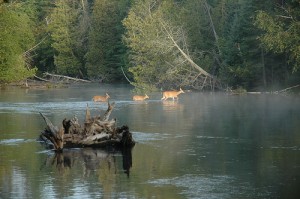Gov. Snyder stands up for biodiversity. Help us say thanks!
Gov. Rick Snyder today took a stand for conservation and good science by vetoing Senate Bill 78, which would have blocked state agencies from designating land to protect biodiversity.
It takes guts to wield the veto pen, and the governor deserves heartfelt thanks for his leadership from everyone who enjoys our state’s great outdoors.
Please take a moment to call the governor’s office to express your support for his decision.
Call the governor’s office: (517) 373-3400.
Send him a good old-fashioned letter:
Gov. Rick Snyder
P.O. Box 30013
Lansing, MI 48909
MEC President Chris Kolb signaled the veto’s importance for future Michiganders’ conservation heritage in a press release applauding Gov. Snyder’s decision.
“Biodiversity means healthy, functioning ecosystems and productive, resilient forests,” Kolb said. “I’m glad the governor has made sure Michigan’s professional resource managers are able to protect biodiversity and all its benefits for future generations.
“Gov. Snyder’s decision today shows a respect for and understanding of science, and honors Michigan’s heritage as a conservation leader,” he added.
In a letter to the Senate explaining his decision, the governor said the bill “causes confusion and inconsistencies and could make it more difficult to sustainably manage Michigan’s Public forests and world class natural resources to meet the changing needs of current and future generations.”
By vetoing the bill, the governor sided with 133 scientists from Michigan universities who sent him a letter highlighting biodiversity’s importance for healthy ecosystems.
Thank you, Gov. Snyder!
###
Photo courtesy Kyle Rokos via Flickr.














